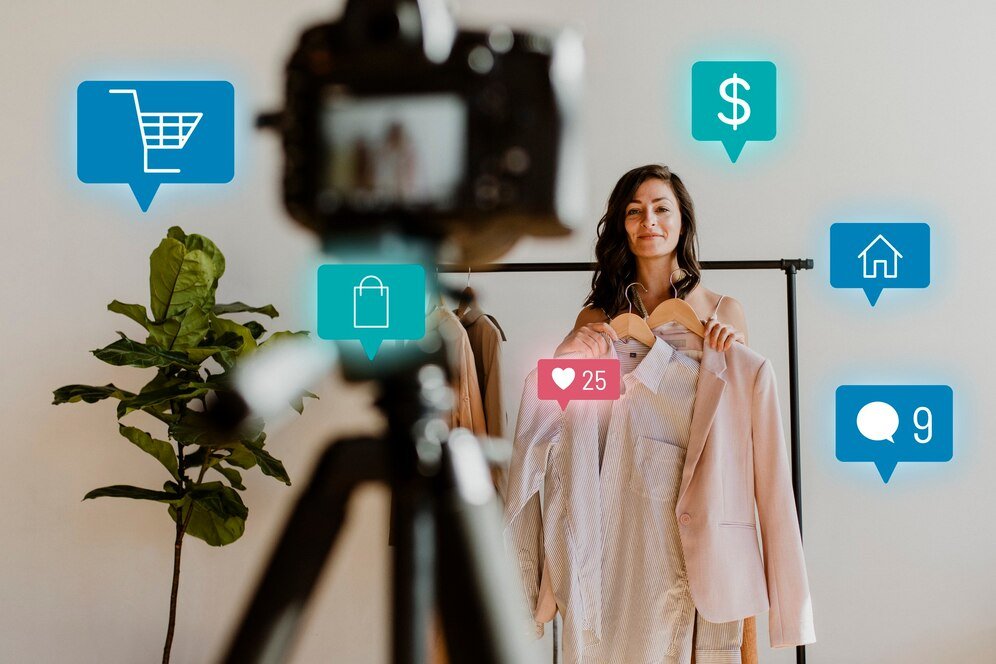Table of Contents
ToggleIntroduction
These days, social media is vital battlefield for companies. Although bigger brands rule with tremendous budgets, small companies have an edge in claiming their space through speed, truthfulness, and clever strategy. This blog will provide practical approaches to maximize social media presence, allowing small companies to challenge their bigger rivals.
Getting Familiar with the Competitive Battlefield
Advantages of Small Companies:
• Agility: Adapt to trends and audience response quickly.
• Authenticity: Form more meaningful connections with personalized engagement.
• Niche Focus: Target specific groups with content tailored to them.
Challenges:
• Limited budgets, smaller teams, and attention fractured across platforms.
• Quality over quantity. Prioritize platforms where the target audience spends most of its time.
Establishing a Clear Brand Identity
Unique Value Proposition (UVP):
• Define what makes the business unique (e.g., sustainability, artisanal craftsmanship).
Visual Consistency
• Utilize cohesive colors, fonts, and imagery. Software such as Canva assists in brand kit maintenance.
Brand Voice:
• Establish a familiar tone (e.g., friendly, professional, humorous) that engages the target audience.
Example: One bakery utilizes a nostalgic, warm tone and recurrent retro imagery to highlight homemade quality.

Content Strategy and Development
Storytelling:
• Relate behind-the-scenes anecdotes, customer reviews, or founder stories to personify the brand.
User-Generated Content (UGC):
• Encourage customers to share reviews or photos. Repost UGC with attribution to build community.
Video Content:
• Prioritize short-form videos (e.g., Reels, TikTok) for greater engagement.
Content Calendar:
• Schedule posts with tools such as Buffer or Hootsuite. Mix promotional, informative, and fun content.
Example: A boutique clothing store shares weekly styling tips, customer photos, and live Q&A sessions.
Engagement and Community Building
Active Interaction:
• Reply quickly to comments and messages. Utilize polls and quizzes to initiate conversations.
Live Sessions:
• Host live product demos or Q&As to interact in real-time.
Community Groups:
• Develop Facebook or LinkedIn groups to discuss mutual interests.
Example: A gym studio offers weekly Instagram Live fitness workouts, establishing a loyal fan base.
Making Paid Advertising on a Limited Budget
Targeted Ads:
• Utilize Facebook/Instagram’s level of detail targeting (e.g., location, interests) to target niche markets.
Retargeting Campaigns:
• Re-target users who have visited the website but didn’t convert.
A/B Testing:
• Test ad creatives and copy to find high-performing variations.
Example: A coffee shop has a Rs. 500 per day ad to local coffee lovers, providing a first-time discount.
Analytics and Adaptation
Key Metrics:
• Monitor engagement rate, click-through rate, conversion rate, and follower growth.
Tools:
• Leverage platform insights (e.g., Instagram Analytics) and Google Analytics for more detailed insights.
Iterative Strategy:
• Make changes to content according to data. For example, if video performs better than images, invest more in video.

Leveraging Trends and Platform Tools
Trend Participation:
•Participate in viral challenges or hashtags for the brand.
Early Adoption:
•Try new features (e.g., Instagram Guides, TikTok Duets) for added exposure.
Example: A bookstore gets into the #BookTok trend, highlighting staff picks.
Collaborations and Partnerships
Micro-Influencers:
•Collaborate with influencers (10k–100k followers) for budget-friendly, authentic marketing.
Cross-Promotions:
•Partner with complementary businesses for joint giveaways or promotions.
Example: A skincare brand collaborates with a local spa for a “Self-Care Bundle” giveaway.
Customer Service and Reputation Management
Timely Responses:
• Address complaints in public to show accountability, then resolve them via DMs.
Proactive Monitoring:
• Utilize tools such as Mention to monitor brand mentions and reply promptly.
Employee Advocacy
Training and Incentives:
• Have employees share company posts. Give them guidelines to ensure brand consistency.
Example: A tech startup’s team posts product launch updates, reaching three times more organic users.
Long-Term Brand Building
Consistency:
• Stick to consistent posting schedules and brand messaging.
Customer Retention:
• Provide loyalty programs or special content (e.g., email list previews).
Example: A jewelry company gives Instagram followers early access to sales.
Conclusion
Small businesses can succeed on social media by leveraging authenticity, thoughtful content, and community interaction. By remaining nimble, data-driven, and customer-focused, they can even the playing field against bigger players. Success demands patience, imagination, and a willingness to evolve—pillars of sustainable growth in the digital age.

This blog offers valuable insights for small businesses navigating social media. It emphasizes authenticity and community engagement as key strategies. Staying agile and data-driven can indeed level the playing field. Patience and creativity are essential for sustainable growth. How can small businesses effectively measure the impact of their social media strategies?
Social media has indeed become a crucial platform for businesses of all sizes. It’s refreshing to see a focus on small companies and their unique advantages, like authenticity and agility. I agree that being customer-focused and data-driven can make a significant difference. However, I wonder how small businesses can balance creativity with the need for consistent, measurable results. Do you think there’s a risk of losing authenticity when trying to scale efforts? Also, what tools or metrics would you recommend for tracking the effectiveness of social media strategies? I’d love to hear more about real-life examples of small businesses that have successfully challenged bigger competitors. What’s your take on the role of storytelling in building a strong social media presence?
This blog highlights a crucial aspect of modern business—social media as a leveling tool for smaller companies. I appreciate the emphasis on authenticity, as it’s something many big brands struggle to maintain. The suggestion to stay nimble and data-driven is spot on, but I wonder how small businesses can consistently gather and analyze data without dedicated resources. Community interaction is key, but how do you balance that with scaling efforts? The call for patience and creativity is inspiring, yet it feels like a tough ask in such a fast-paced environment. What specific tools or platforms would you recommend for small businesses to track their success? Overall, this is a great read, but I’d love to hear more actionable steps!
Social media has indeed become a crucial platform for businesses of all sizes. The emphasis on authenticity and community engagement is spot on—it’s what sets small businesses apart. Being nimble and data-driven is a smart approach, but I wonder how smaller companies can access the tools needed for effective data analysis. The idea of patience and creativity as pillars of growth is inspiring, but how do you balance that with the pressure to show quick results? I’d love to hear more about specific examples of small businesses that have successfully challenged bigger brands. What’s your take on the role of storytelling in building a strong social media presence? Let’s discuss!
This blog highlights crucial aspects for small businesses striving to make their mark on social media. Authenticity and community engagement seem like game-changers, but how do they translate into tangible results? Staying nimble and data-driven is a must, but what tools or metrics should small businesses prioritize to track their progress? I appreciate the emphasis on patience and creativity, but how does one balance these with the need for quick wins in a competitive landscape? It would be great to see more examples of small businesses that have successfully implemented these strategies. Also, how can companies ensure their content remains relevant as algorithms and trends evolve? Overall, this is a solid guide, but I’m curious—what’s the biggest challenge small businesses face when trying to compete with larger brands on social media?
This blog highlights the importance of authenticity and agility for small businesses on social media. It’s refreshing to see a focus on strategies that don’t rely solely on big budgets. The emphasis on community engagement is spot on, as it builds trust and loyalty. However, I wonder how small businesses can balance creativity with consistency in their content. Measuring the impact of social media strategies seems crucial, but what tools or metrics would you recommend for accurate tracking? Do you think smaller brands can truly compete with larger ones in the long run, or is it more about carving out a niche? I’d love to hear your thoughts on this!
Social media is indeed a game-changer for small businesses, and this blog captures that perfectly. The focus on authenticity and community engagement is spot on—it’s what sets smaller brands apart. I love the idea of leveraging agility and creativity to compete with bigger players. But I’m curious, how do you suggest small businesses maintain that authenticity while scaling their efforts? It feels like there’s a fine line between growth and losing that personal touch. Also, what specific tools or metrics would you recommend for tracking the success of these strategies? I’d love to hear about some real-life examples where small businesses have truly made an impact. Do you think storytelling plays a bigger role in social media success than we often realize? What’s your take on balancing creativity with consistency?
Social media is indeed a game-changer for small businesses, and this blog captures its essence perfectly. The focus on authenticity and community engagement is spot on—it’s what sets smaller brands apart. I love the idea of being nimble and data-driven, but I wonder how feasible it is for businesses with limited resources. Do you think smaller companies can truly compete without sacrificing their core values? Also, how do you suggest they handle the pressure to constantly produce creative content? I’d be curious to know if there are specific tools or platforms that have proven effective for small businesses. What’s your opinion on the role of user-generated content in building trust and engagement? Lastly, do you think storytelling is overrated, or is it still a powerful tool in today’s fast-paced digital world?
Small companies absolutely can compete while staying true to their values. Core values often become their key differentiator in crowded markets. For example: Patagonia prioritizes sustainability, even turning down lucrative deals that conflict with its mission. TOMS Shoes built loyalty through its “One for One” model. Actionable Tip: Focus on a niche audience that aligns with your values. Authenticity resonates more than scale, and platforms like Etsy or Faire cater to values-driven businesses.
Consistency matters, but burnout is real. Strategies to ease the load:
• Repurpose content: Turn a blog post into a video, infographic, or social snippets.
• Leverage tools:
o Canva (DIY design), Loom (quick videos), CapCut (editing).
o ChatGPT or Jasper for brainstorming ideas.
o Later or Buffer to schedule posts in advance.
• Collaborate: Partner with micro-influencers or customers to co-create content.
User-Generated Content (UGC) for Trust
UGC is a trust supercharger. Stats show 85% of consumers find UGC more influential than brand content.
• How to use it:
o Run hashtag campaigns (e.g., #MyReformation for Reformation’s sustainable fashion).
o Feature reviews/testimonials prominently.
o Offer incentives (discounts, shoutouts) for submissions.
• Platforms: Instagram Stories, TikTok challenges, or tools like TINT to aggregate UGC.
Storytelling’s Power in 2025
Storytelling is far from overrated—it’s essential. Humans process stories 22x faster than facts.
• Why it works:
o Dove’s “Real Beauty” campaign challenged beauty stereotypes.
o Airbnb uses host/guest stories to humanize travel.
• Adapt for short attention spans: Use micro-stories (15-sec videos, carousel posts) with emotional hooks.
Small businesses thrive by doubling down on authenticity—whether through UGC, values-aligned storytelling, or smart tools. The goal isn’t to outspend competitors but to out-connect with audiences.
Hope you will find something interesting. Looking forward to hear from you.